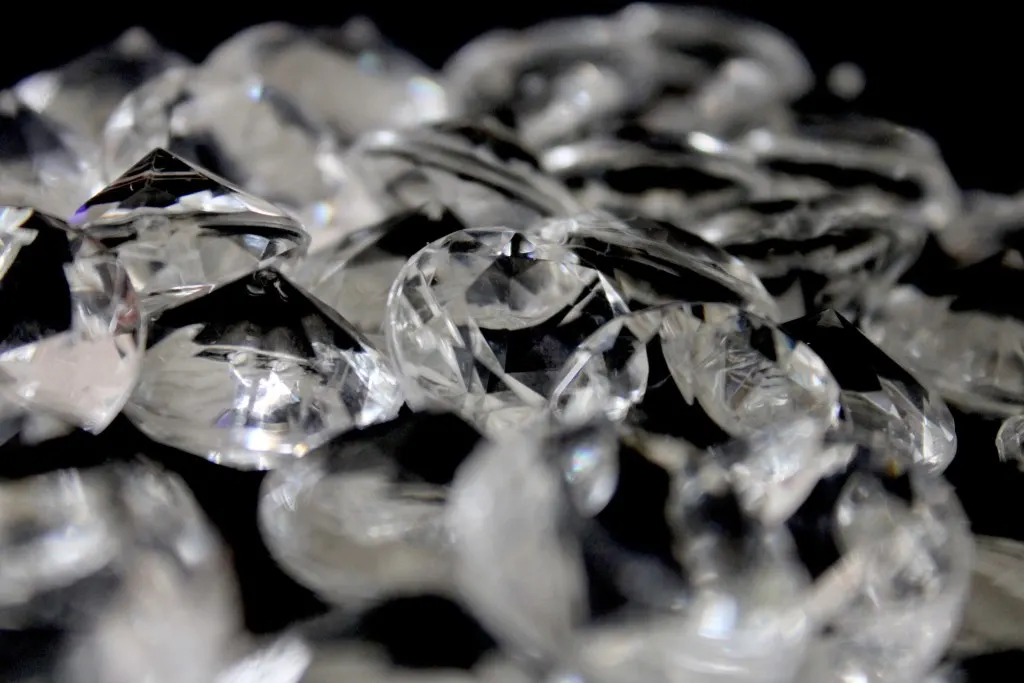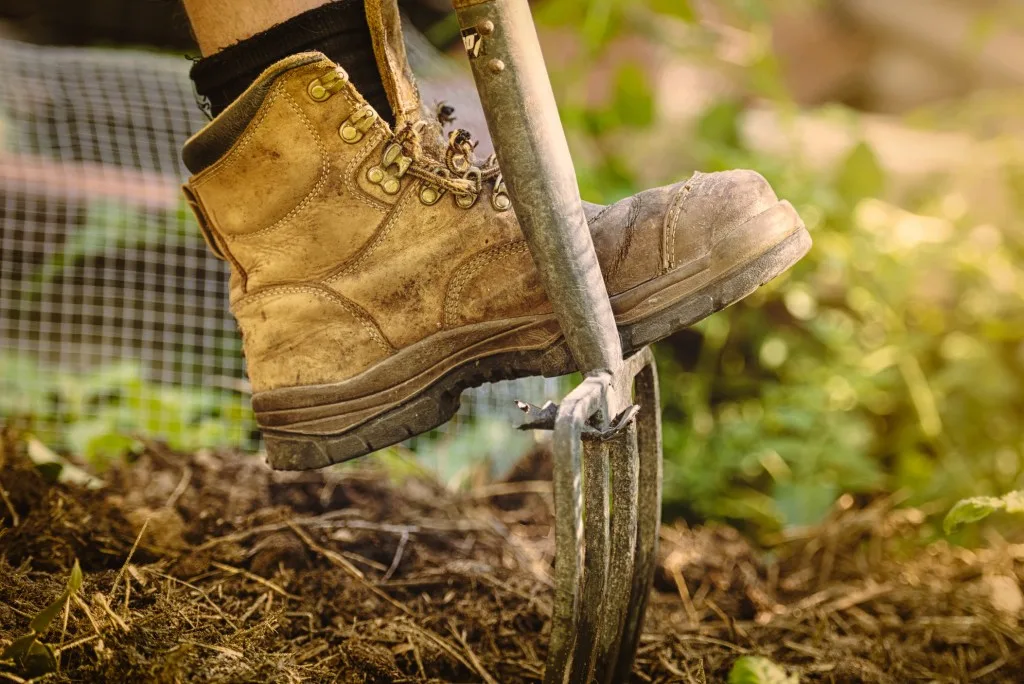We heard about a place in Arkansas where you can dig for diamonds.
But is it true? Honestly, it sounds like something you’d have to go to Africa to do.
We looked into Crater of Diamonds State Park to see what we could find.
Let’s dig in!
A Little About Arkansas
Arkansas’ nicknames are The Natural State or Land of Opportunity, and Missouri, Tennessee, Mississippi, Oklahoma, and Texas border it.
The state’s diverse geography provides a variety of outdoor experiences. The Ozark and Ouachita mountains and densely forested Arkansas Timberlands provide ample space for play.
Arkansas also offers incredible opportunities for water recreation and sports as it stretches to the eastern lowlands along the Mississippi River and the Arkansas Delta. Overall, there are over 600,000 acres of lakes and 9,700 miles of streams and rivers.
Hot Springs National Park is the oldest park maintained by the National Park Service. And Mammoth Spring, with nine million gallons of water flowing hourly, is one of the world’s largest springs. There’s so much adventure! Challenge yourself with the wilds of white-water rafting or relax on a leisurely canoe trip.
Mountain bikers can find challenging trails, and rock climbers enjoy the cliffs. If you’re culturally inclined, visit one of the state’s archaeological parks or participate in an interpretive program to learn a new skill.
What is that? Are you here for the diamonds? So are we.

So, Can You Find Diamonds in Arkansas?
Arkansas is the only state in the U.S. where the public can dig in a field at Crater of Diamonds State Park.
Geologists estimate that about 100 million years ago, during the age of the dinosaurs, a volcanic eruption called a diatreme occurred. It originated deep within the Earth’s mantle. Magma and gas rushed to the surface and hit groundwater.
This resulted in a massive explosion, blasting open a crater and ejecting rocks all over the landscape. Those rock fragments contained diamonds. Over millions of years, weathering broke down the cavity and rocks into soil. The most weather-resistant minerals remain. The diamonds!
In 2021, the park registered 258 diamonds found by visitors. On average, people find one to two diamonds per day. Admit it. You’re already organizing the trip in your head.
The dig site is 37 1/2-acres of dirt and clay. Officials plow it several times a year to help expose new minerals. You’ll want to wear shoes and clothes you do not mind getting dirty. The park maintains sun shelters and washing pavilions where you can sluice the soil you dig.
You can bring your digging tools (shovel, bucket, screen, etc.) from home or rent equipment from the park. Take note that mechanized digging equipment is not allowed.
Know Before You Go: Check “What Should I Bring” on Crater of Diamonds’ website and bring your own equipment to save money.

About Crater of Diamonds State Park, Arkansas
Located just south of Murfreesboro, Arkansas, Crater of Diamonds State Park wraps a lot of activity into one neat location.
If you’re new to diamond hunting like we are, stop first at the information center, followed by the Diamond Discovery Center. Inside you’ll learn how to identify a diamond and the three different search methods people use.
Have you exhausted your prospecting? Enjoy a cool dip in the Diamond Springs Water Park. It has a wading pool, spray geysers, slides, and a spacious deck to sit back and relax.
The park also has walking trails, picnic and camping sites, and a gift shop. It’s roughly a mile from downtown Murfreesboro, where you can find a meal or pick up that last-minute item you forgot.
How Much Does It Cost to Dig For Diamonds?
Digging for diamonds is inexpensive. To search all day, the adult price is $10, children aged 6-12 cost $6, and those under six are free.
Rental prices for equipment are reasonable: four dollars for a basic box screen or twelve dollars for a basic kit that includes a shovel, screen, and bucket. Each rental item has a deposit as low as five dollars and as high as $70.
There are other fun, native gemstones found in the park. These include amethyst, agate, jasper, garnet, peridot, hematite, and many others. All of these, including the lucky diamond, are yours to keep.
Pro Tip: After finding your diamonds, check out these 7 Beautiful Waterfalls in Arkansas.
Are Diamonds Found in Arkansas Worth Anything?
Calculating a diamond’s worth, if you’re lucky enough to find one, can be tricky. Park employees can’t grade or appraise your find. However, they can correctly identify and register it.
Diamonds get their grades from color, carat weight, clarity, and cut. A diamond found in the crater in 2015 is worth around $1 million. You’ll have to do some sleuthing if you want to know the value of yours. Your best bet is to take it to a local jeweler for appraisal.
Did your kids, or maybe you, collect a bunch of other rocks that you can’t part with? Park staff at the Diamond Discovery Center can help you identify your stones and other minerals.

Best Camping Near Crater of Diamonds State Park
We’re convinced the rock lovers in our family will really dig Crater of Diamonds. See what we did there? So now it’s time to find a place to camp.
Crater of Diamonds State Park
The Crater of Diamonds State Park campground has 52 campsites, 47 of which include water, electrical, and sewer hookups. Visitors report level paved sites, tables, firepits, and good bathroom facilities. The average rental per night is $36.
Note: The campground is undergoing renovations, so call ahead for details.
Laurel Creek Campground
Laurel Creek Campground is located on Lake Greeson and is part of a U.S. Army Corps of Engineers recreation area. It’s about a thirty-minute drive from your Arkansas diamond hunting excursion and offers 24 campsites that can accommodate both RV and tent camping.
Keep in mind that you must drive down a bumpy, dirt, access road to reach the sites. However, visitors report the area as being quiet and beautiful. Between March 1st and October 31st, the rate is $8 per night. The rest of the year, it’s free.
Lake Gleeson also provides access to fishing, hunting, boating, and hiking trails.
Pro Tip: Spend the night at one of these 7 Best Free Camping Spots in Arkansas.
Best Hikes at Crater of Diamonds State Park
Do you need to stretch your legs and straighten your back after a bit of diamond hunting? We found a couple of excellent trails close by.
Little Missouri River Trail
The Little Missouri River Trail originates in the Crater of Diamonds campground. Visitors report the 1.1-mile loop as an easy route, taking about 21 minutes to complete. The trail goes through woods to the Little Missouri River and is partly paved with concrete, gravel, or is natural. The lovely walk is friendly for kids, dogs, and wheelchairs alike.
Prospector Trail
The Prospector Trail is located just west of the Diamond Springs Water Park. The easy walk is along a 1.2-mile gravel trail. Rock nerds will enjoy the exposed unique geological features, plus you’ll find plenty of shade. You need an entry fee to the diamond search area to access this trail.
Is a Road Trip to Arkansas’ Crater of Diamonds Worth It?
We may not strike it rich, but the value of the experience sounds worth it. Add a hike and some splashing around the water park in Crater of Diamonds State Park, and you’ll have a well-rounded trip good for the whole family. Even if we don’t find a diamond, it sounds like great fun.
Have you been to Crater of Diamonds State Park in Arkansas? Tell us about what you found!
Discover the Best Free Camping Across the USA
To be honest with you, we hate paying for camping. There are so many free campsites in America (with complete privacy).
You should give it a try!
As a matter of fact, these free campsites are yours. Every time you pay federal taxes, you’re contributing to these lands.
Become a FREE CAMPING INSIDER and join the 100,000 campers who love to score the best site!
We’ll send you the 50 Best Free Campsites in the USA (one per state). Access the list by submitting your email below: